Beautiful Flower Photography Ideas and Tips for Beginners
Updated on
Flower photography is a rewarding hobby that can elevate your skills, whether you're just starting or looking to take your shots to the next level. From capturing delicate petals to showcasing the vibrant colors of nature, this guide will help you create breathtaking floral photos that stand out.
Let's break down the key advice for shooting flowers, with ideas for creative flower photography also.
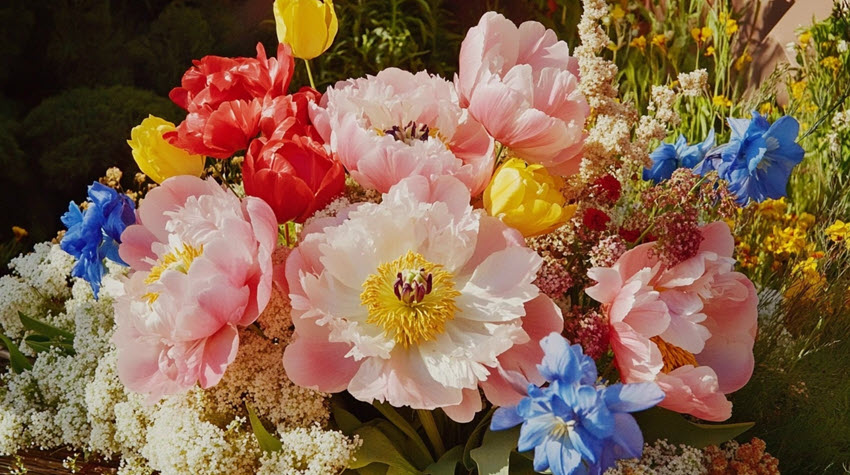
How to Take Beautiful Flower Photos
1. Start with the Right Gear
For beginners, you don't need expensive equipment to take stunning flower photos, but using the right tools will make a noticeable difference.
Smartphone Cameras: Your phone can be surprisingly powerful. If your phone is recent, it can produce prints large enough to be displayed. However, be mindful of overexposure. Lower the exposure to preserve details.
DSLR & Lenses: For more professional results, a DSLR paired with a 50mm lens (or an 85mm lens for portraits) will give you sharper, crisper images. Wide apertures in these lenses help create that dreamy blurred bokeh background that makes flowers pop.
Macro Lenses: Want to get up close and personal with flowers? A macro lens is your best friend. For intricate shots like dew drops on petals or the fine hairs of a flower, a macro lens reveals every detail. A tripod is also crucial for sharpness in macro shots.
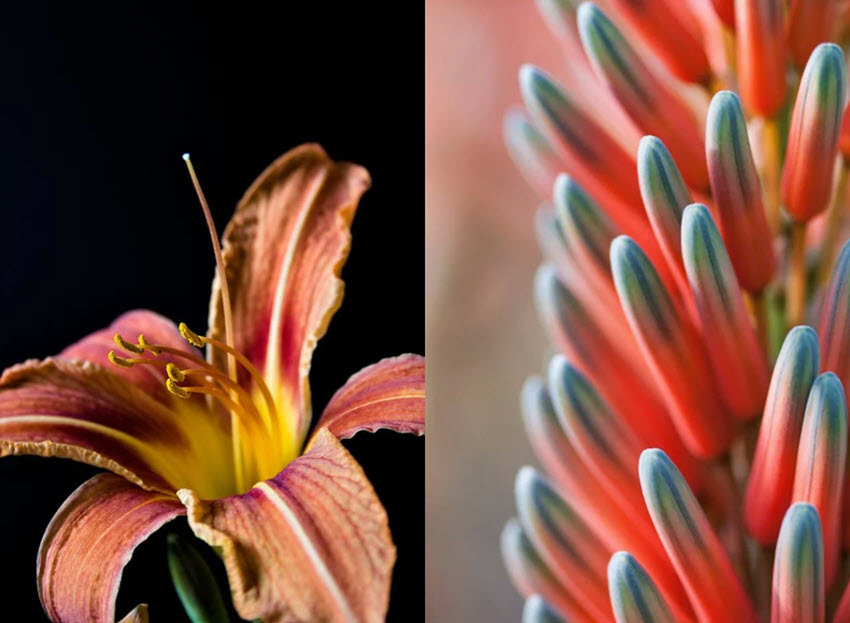
Other Gear:
Tripod: Eliminates camera shake, especially important for macro photography or low-light shots.
Reflectors: A great tool for redirecting natural light and filling in harsh shadows.
2. Lighting Is Key
The right lighting can make or break your shot.
Natural Light: Photographers like Laura Hicks recommend shooting in soft, diffused light—ideally, during golden hour (early morning or late afternoon). It creates a warm, flattering glow.
Open Shade: For soft lighting without harsh shadows, shoot flowers in open shade (under a tree or near a building). This allows for wider apertures and creamy backgrounds.
Aperture ƒ/4.5, Focal 28.0mm, ISO 200, Shutter Speed 1/1000s, Taken with NIKON D700 by Mali Maeder.
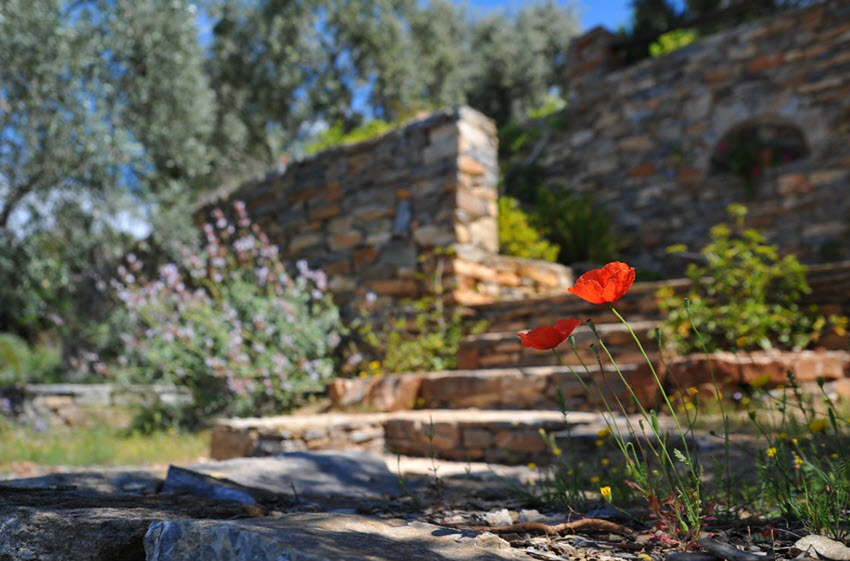
Indoor Lighting: Don't let gloomy weather stop you. Use continuous lighting or experiment with creative setups, like using a spray bottle for droplets, or even shooting flowers against a computer screen for dramatic reflections.
3. Focus on Composition
Composition is essential for creating visually compelling flower photos.
The Rule of Thirds: Composing your image according to the rule of thirds—placing your main subject off-center—can make your shot more dynamic. Also, experiment with different angles. Flowers can look completely different when shot from various perspectives, even a slight shift.
Find Your Focal Point: Focus on the most interesting part of the flower—whether it's the center, the petal edges, or even the back. Don't shy away from shooting the unexpected, like the back of a flower or a dried petal.
Use Leading Lines: Incorporate natural elements like stems or leaves to guide the viewer's eye toward the main subject.
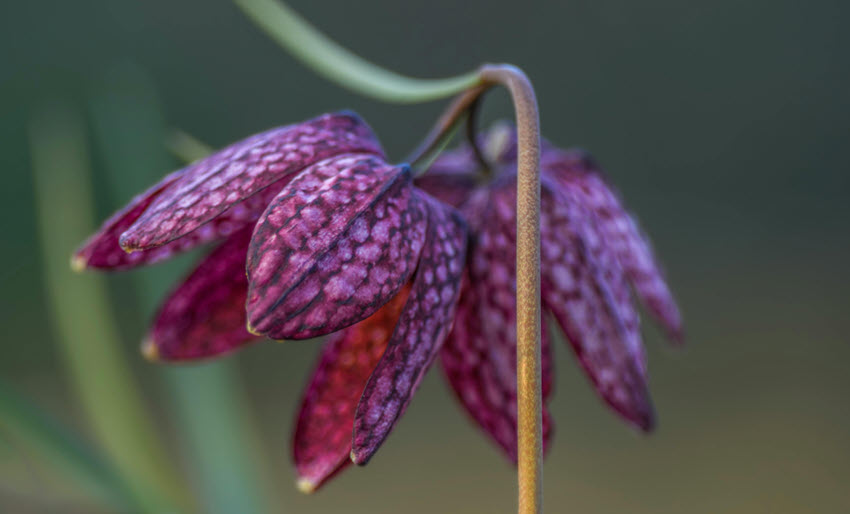
Aperture ƒ/5.6, Focal 298.0mm, ISO 400, Shutter Speed 0.01s, Taken with ILCE-7M4 by Mariya.
4. Experiment with Depth of Field
Controlling your aperture lets you create a wide range of effects.
Wide Aperture for Blurring: A shallow depth of field allows you to eliminate distractions in the background—like stray leaves or unappealing objects—and focus solely on the flower.
Focus Stacking: For macro shots, use focus stacking to combine multiple photos taken at different focal points. This ensures that every detail, from the tips of the petals to the base of the flower, stays in sharp focus.
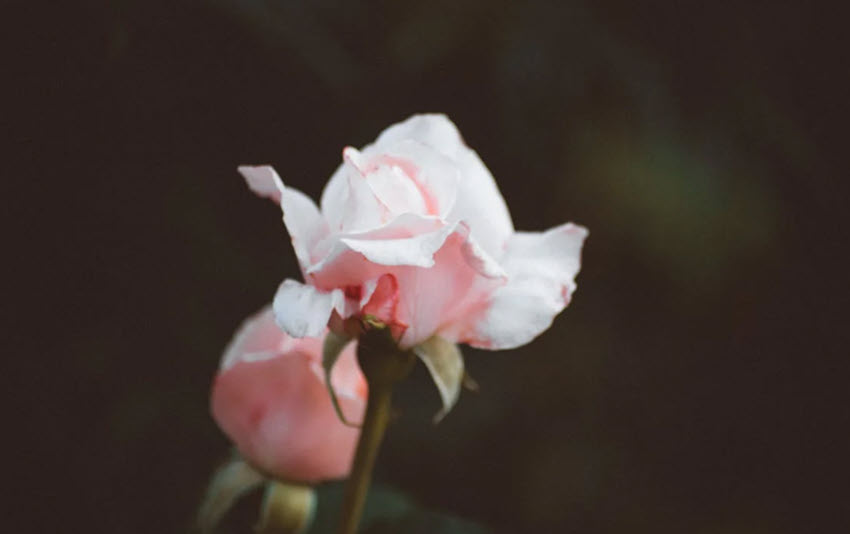
Aperture ƒ/4.5, 176.0mm Focal, ISO 800. Taken on Canon EOS 5D Mark IV by Humphrey Muleba. Cheshire West and Chester, England, United Kingdom.
5. Shoot with Emotion and Storytelling
Flowers aren't just pretty; they can evoke emotions and tell stories.
Tell a Story: Use your images to convey a story. A wilting petal or a lone flower standing out in a field can communicate feelings of loneliness, resilience, or beauty in imperfection.
Embrace Movement: Don't aim for perfection all the time. Accidental movement or a blurry shot can introduce emotion and unexpected beauty into your images.
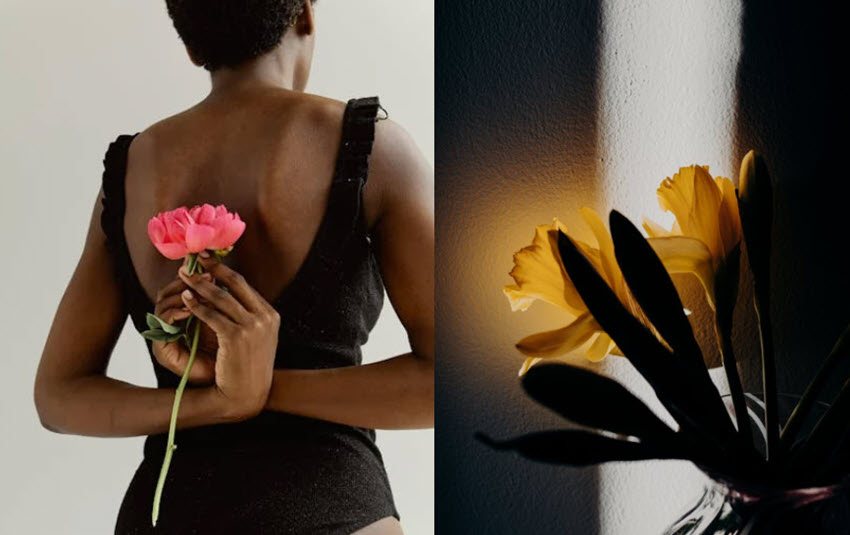
6. Explore Creative Techniques
Try something new to elevate your flower photography.
Reflections: Play with reflections to add depth and intrigue. Try using a tablet or a reflective surface to mirror the flower, or photograph flowers in water for beautiful symmetry.
Props and Filters: Experiment with props—like spray bottles for droplets, or create dream-like effects by shooting through plastic wrap or using a prism lens to distort the light.
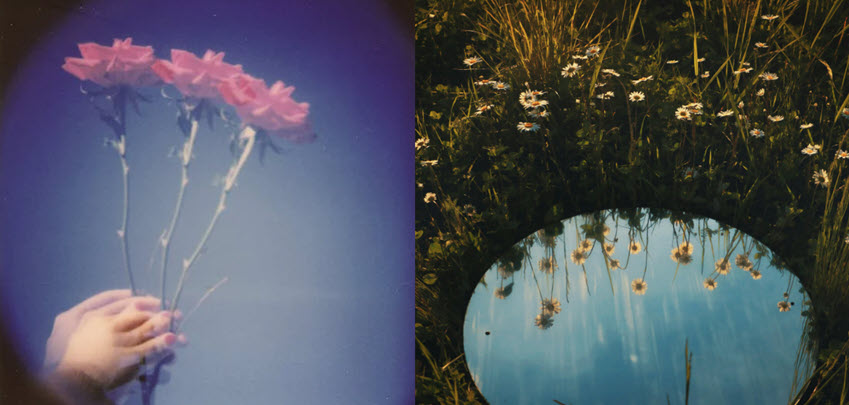
Black & White Photography: Convert your flower photos to black and white to highlight the shapes, textures, and contrasts. You can add grain in post-processing to give it a timeless, film-like look.
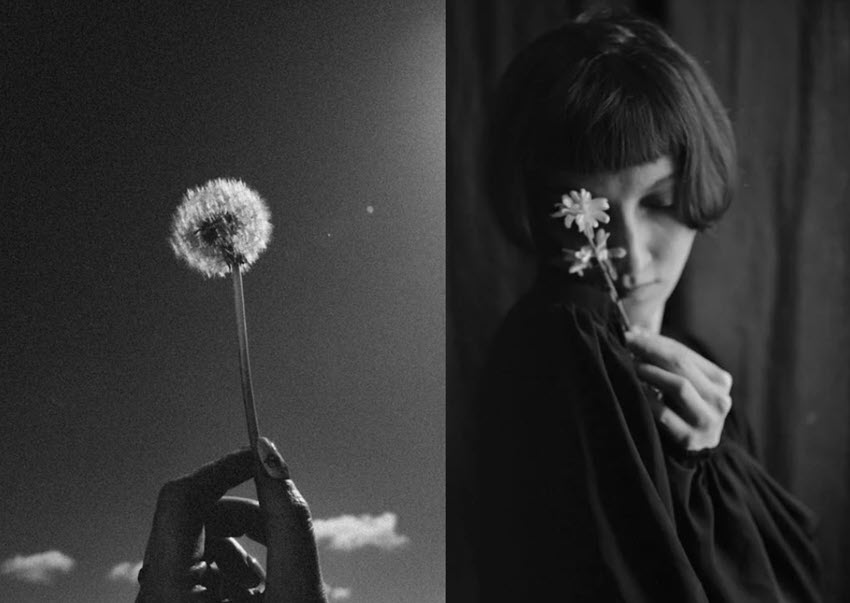
7. Play with Post-Processing
Editing your flower shots can transform them from good to great.
Contrast and Saturation: Play with the contrast and saturation settings to make your flowers stand out. Increasing the saturation can add vibrancy, while decreasing it might lend a dreamy, vintage feel. Hicks, for example, loves to adjust saturation for dramatic flair.
Temperature and Tint: Fine-tune the white balance in post to cool down or warm up the image. Braught recommends adjusting the temperature and tint to balance the image's mood and correct any color imbalances.
Enhance and upscale your images: to achieve large resolution for 300DPI high-quality print, or restore and fix wasted photos that are out-of-focus, blurred, or have high ISO noise, you can use AI powered photo tool – Aiarty Image Enhancer to improve your flower photography.
- Upscale photos by 2X, 3X, 3X up to 10K, 16K, 32K for large printing resolutions
- Fix JPG-compression artifacts such as mosquito noise, color banding, and pixelation
- Keep details and generate a proper texture with More Detail V3 model
- Batch process 3000 images per hour with GPU acceleration
12 Ideas for Creative Flower Photography
1. Macro Photography of Flower
Get up close and personal with your flowers. Macro photography allows you to capture intricate details, from the delicate texture of petals to the fine hairs on leaves.
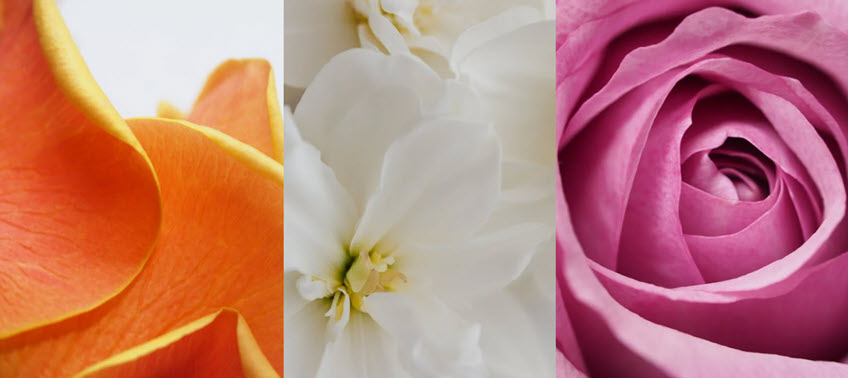
2. Dew Kissed Flower Photography
Photograph flowers covered in dew or behind glasses covering up with water droplets. The droplets catch the light, creating a magical, almost surreal effect.
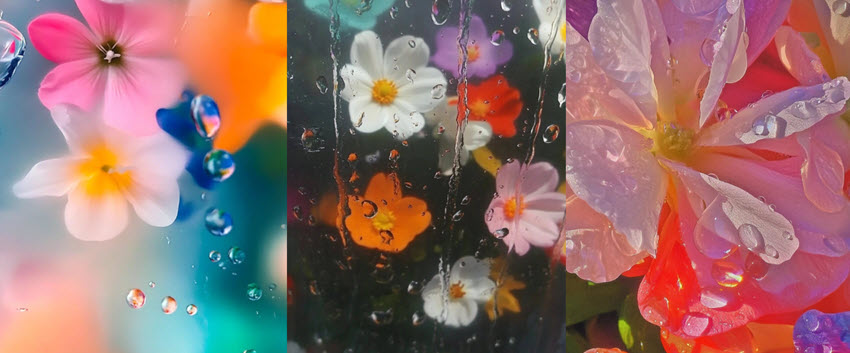
3. Flower Frozen in Ice Photography
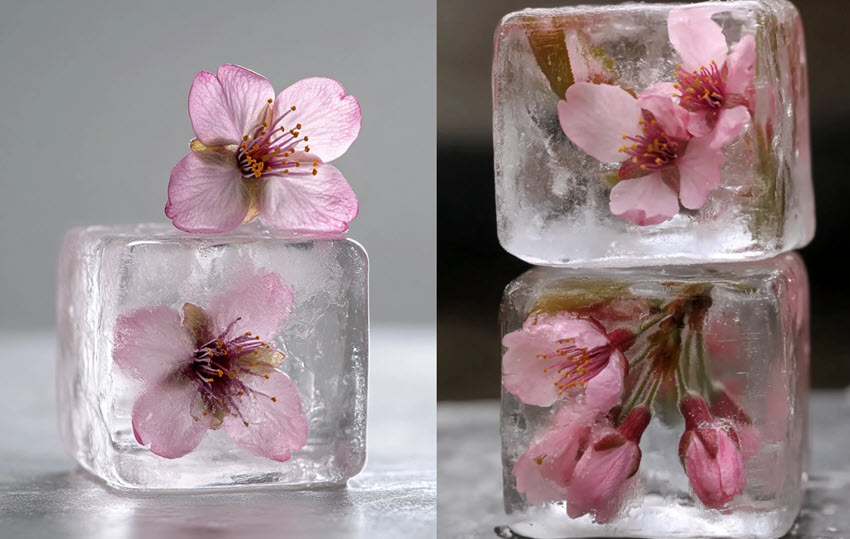
Freeze a flower in a block of ice for a striking visual contrast. The ice adds texture and a unique framing element, encapsulating the beauty of the flower in a crystalline, frosty layer.
4. Motion Blur Aesthetics
For a dreamy, abstract look, try capturing flowers with a bit of motion blur. Gently sway the flower or use a slow shutter speed to create soft, flowing movement. This technique can evoke feelings of softness, fluidity, or even fleeting moments in nature.
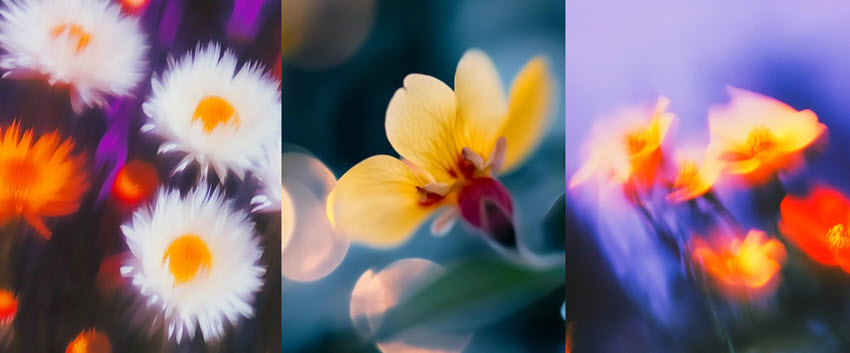
5. Calder-Inspired Flower Photography
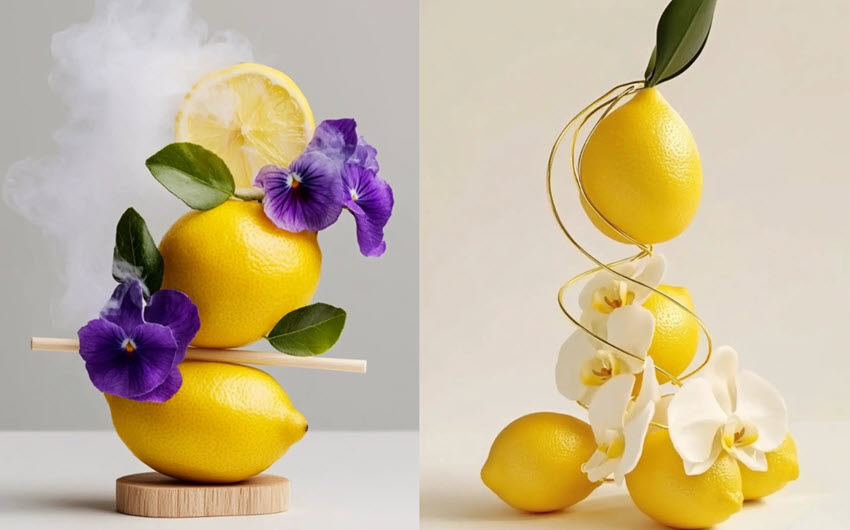
Inspired by Alexander Calder's kinetic sculptures, create a whimsical, abstract flower composition by incorporating dynamic balancing settings.
6. Use Petals As Decorations
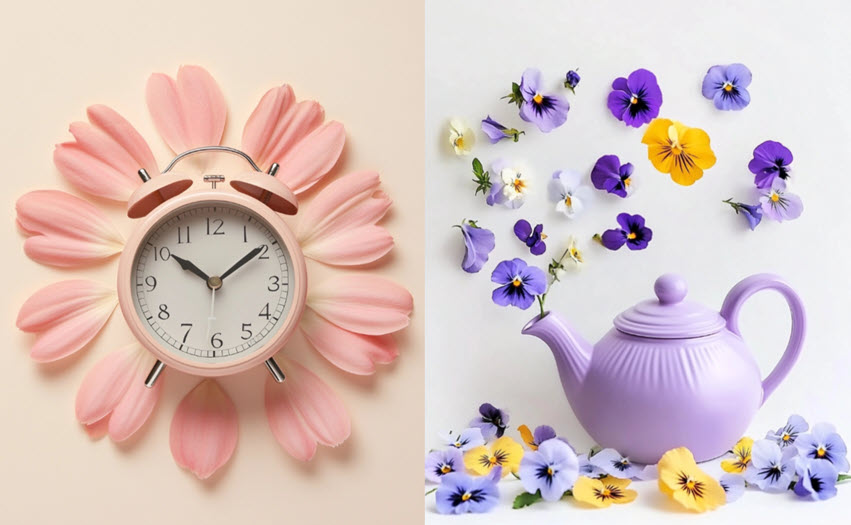
You don't have to photograph the whole flower to create an intriguing image. Try scattering flower petals on a flat surface or around objects, to create a decorative pattern.
7. Lay Flat Flower Photography
Place flowers flat on a surface and shoot from directly above. This technique highlights the symmetry and patterns of the flowers, allowing you to create clean, graphic compositions. It works especially well with flowers that have interesting textures or contrasting colors.
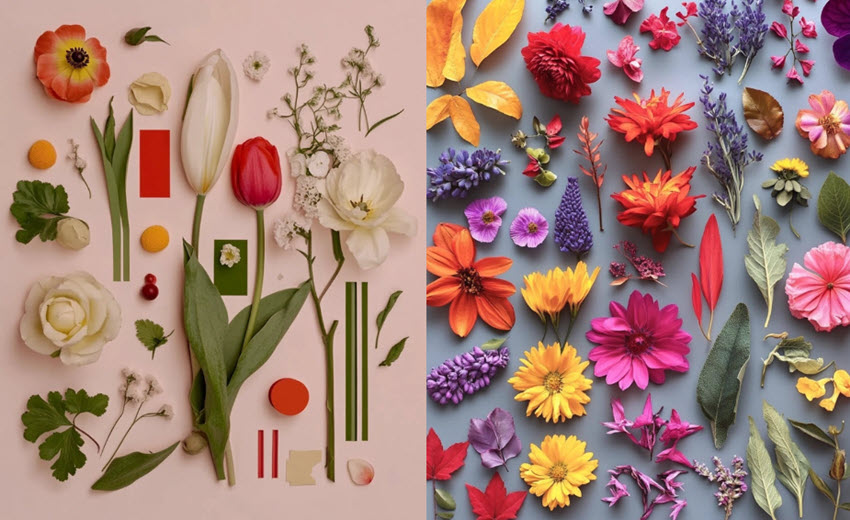
8. Holographic Flower Photography
Reflective sheets or holographic film can create vibrant, rainbow-like light distortions around the flowers, featuring 1970s retro vibe.
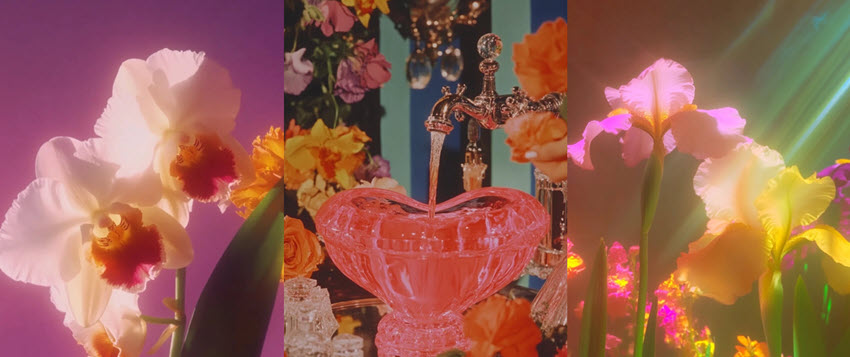
9. Flower Photography with Reflections
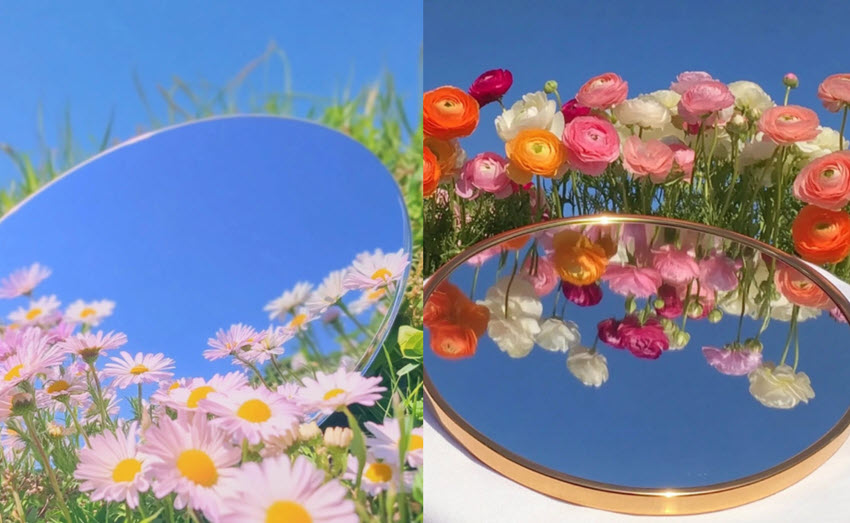
Find a reflective surface like water or a mirror to capture your flowers in a stunning reflection. The symmetry and doubling effect of reflections can add depth and interest to your photos, giving them a magical, otherworldly feel.
10. Flower and Portrait Photography
Combine flowers with human subjects for a unique fusion of nature and portraiture. Position the flowers in the foreground or use them as a prop for the subject.
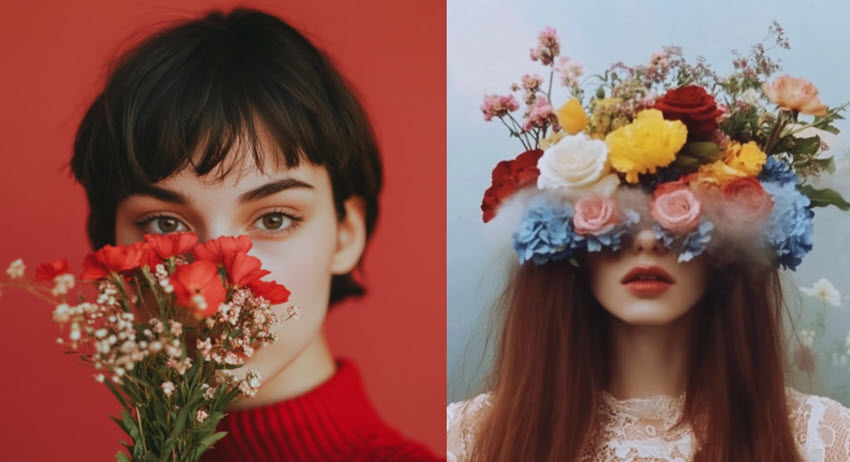
11. Low Key Flower Photography
For a dramatic and moody look, try low-key lighting, where most of the image is dark with just a hint of light illuminating the flower.
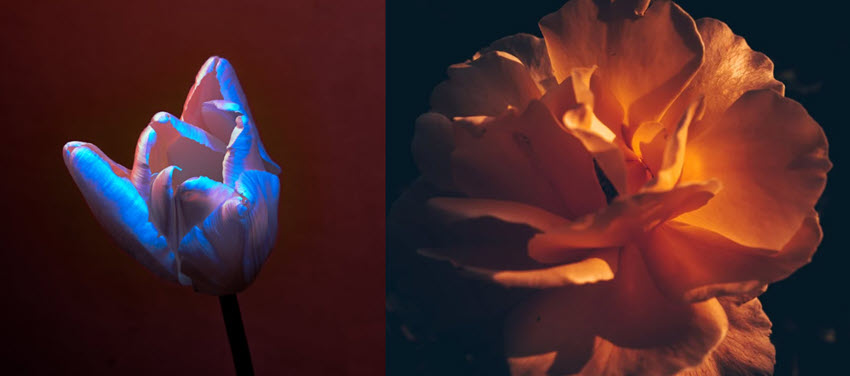
This technique can create an almost mysterious, intimate atmosphere, perfect for showcasing the details and textures of the flower against a dark backdrop.
12. Under Water Flower Photography
Take your flower photography to the next level by submerging the flower in water. This adds a layer of intrigue, as the water distorts and refracts the light, giving the flowers an ethereal, fluid quality.
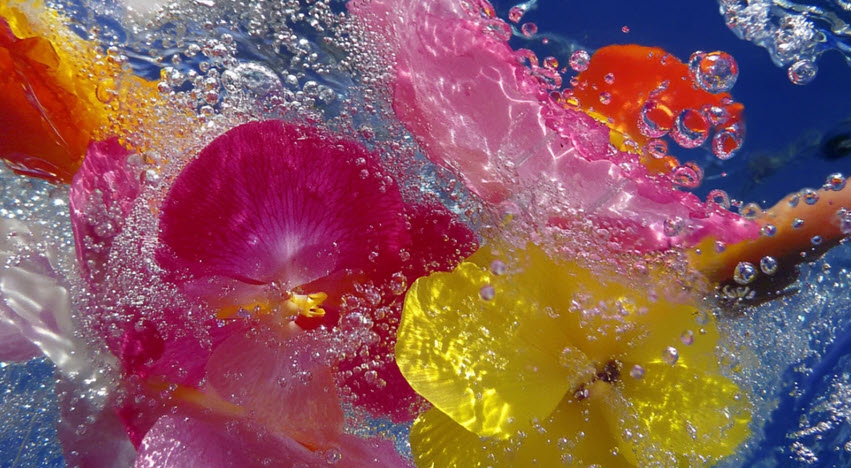
Whether it's floating or suspended, underwater photography brings a whole new dimension to flower images.
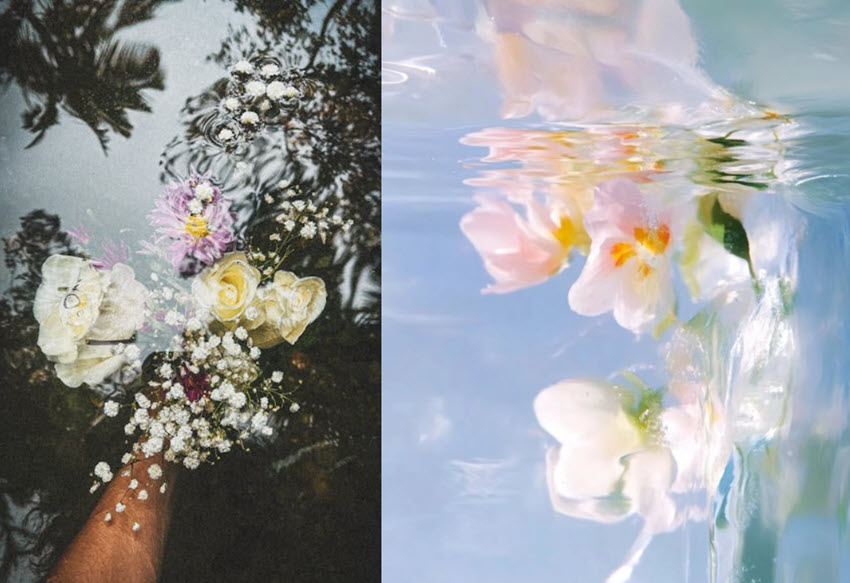
Conclusion
Flower and plant photography is a versatile, rewarding genre that offers endless opportunities for creativity. By combining the right gear, techniques, and editing tips, and experimenting with these creative flower photography tips, you'll add variety and depth to your portfolio.
Remember to have fun with the process—flowers will always surprise you with their beauty, and your camera's ability to capture it.